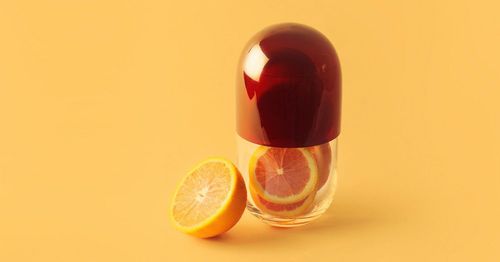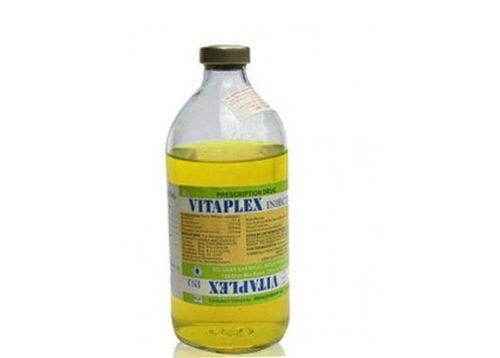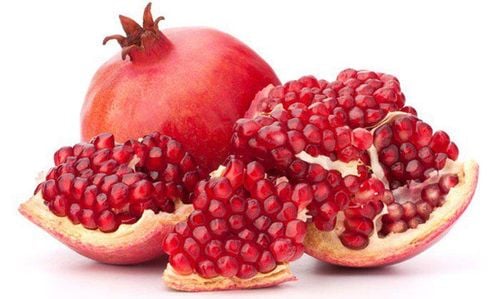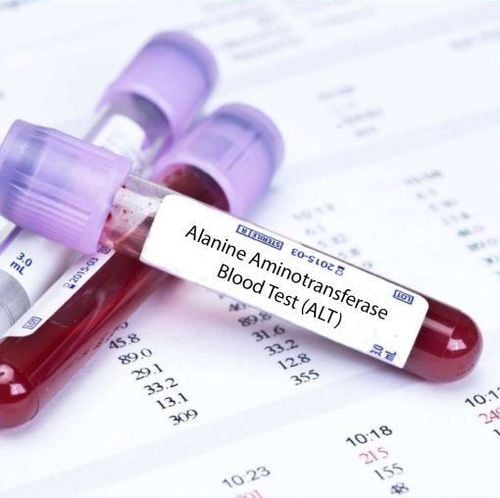This is an automatically translated article.
How your body absorbs different vitamins plays a big role in effectiveness and safety, which is why it's important to understand the difference between water-soluble and fat-soluble vitamins. A water-soluble vitamin is a vitamin that is easily absorbed into the body's tissues and is metabolized more quickly than fat-soluble vitamins.
1. Water-soluble vitamins
Most of the vitamins are water soluble such as: Vitamin B1 (thiamine), Vitamin B2 (riboflavin), Vitamin B3 (niacin), Vitamin B5 (pantothenic acid), Vitamin B6, Vitamin B7 (biotin), Vitamin B9 (folate), Vitamin B12 (cobalamin) and Vitamin C. Any excess of water-soluble vitamins, such as Vitamin B complex or Vitamin C, is excreted through urination. Many B vitamins and Vitamin C can be found in vegetables (such as leafy greens and other greens) and fruits (such as citrus fruits).Unlike fat-soluble vitamins, water-soluble vitamins are not normally stored in the body. For this reason, you should try to get this vitamin regularly from your diet. This article provides a detailed overview of water-soluble vitamins - their functions, health benefits, food sources, recommended amounts, and more.
Vitamins are nutrients needed by the body in small amounts to help maintain life and enhance resistance. Most vitamins cannot be made by the body, so they need to be provided in the diet.
Vitamins are grouped into fat-soluble vitamins and water-soluble vitamins.
Water-soluble vitamins include: Vitamin B1 (thiamine), Vitamin B2 (riboflavin), Vitamin B3 (niacin), Vitamin B5 (pantothenic acid), Vitamin B6, Vitamin B7 (biotin), Vitamin B9 (folate), Vitamin B12 (cobalamin) and Vitamin C.
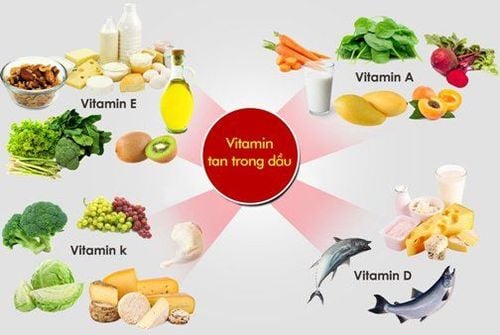
Nhóm vitamin hòa tan trong chất béo
2. Thiamin (Vitamin B1)
Thiamine is an enzyme required for several central energy metabolism processes, and is therefore required for the release of energy from carbohydrates. Thiamine is also involved in the normal function of the nervous system and other excitable tissues, such as skeletal muscle and the heart.2.1 Types of Thiamine Thiamine pyrophosphate: Also known as thiamine diphosphate, thiamine pyrophosphate is the most abundant form of thiamine in your body. It is also the main form found in whole foods. Thiamine triphosphate: This form is found in foods of animal origin, but is less abundant than thiamine pyrophosphate. It is thought to represent about 10% of the total thiamine found in animal tissues. Thiamine mononitrate: A synthetic form of thiamine often added to animal feed or processed foods. Thiamine hydrochloride: Used in supplements. 2.2 Role of Thiamin Like other B vitamins, thiamine acts as a coenzyme in the body. Coenzymes are small compounds that help enzymes trigger chemical reactions that would otherwise not happen on their own. Thiamine is involved in many essential chemical reactions. For example, it helps convert nutrients into energy and aids in the formation of sugars.
2.3 Food Sources Whole grains, nuts, meat (especially pork), fruits and vegetables, and fortified breakfast cereals are dietary sources of thiamin.
2.4 Recommended Amount
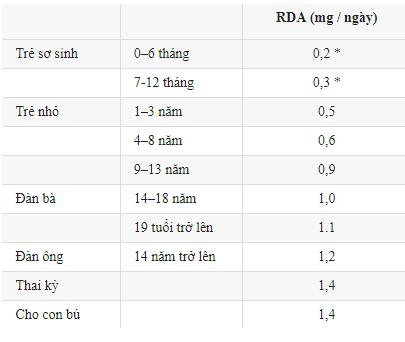
RDA does not recommend for infants, Instead, the table shows appropriate intake, marked with an asterisk (*) indicates adequate intake.
2.5 Deficiency Deficiency is uncommon, but high blood sugar can increase the excretion of thiamine in the urine, increasing the need and risk of deficiency. In fact, thiamine levels can be reduced by 75–76% in people with type 1 and type 2 diabetes.
Thiamine deficiency causes beriberi peripheral nervous system disease. Another condition caused by thiamine deficiency, which affects the central nervous system rather than the peripheral nervous system, sometimes seen in alcoholics and people with HIV, is called Wernicke-Korsakoff syndrome (also known as depression syndrome). alcoholic memory).
These disorders are associated with a wide range of symptoms, including loss of appetite, weight loss, impaired nerve function, mental problems, muscle weakness, and an enlarged heart.
2.6 Side effects and toxicity Thiamine is considered safe. There have been no reports of side effects after taking large amounts of thiamine from foods or supplements. Due to the excess amount of thiamine will quickly be eliminated from the body through urine.
2.7 Benefits of Thiamine Supplements There is no good evidence that thiamine supplements are beneficial for healthy people getting adequate amounts from their diets.
But for people with high blood sugar or poor thiamine status, high-dose supplements can lower blood sugar and blood pressure.
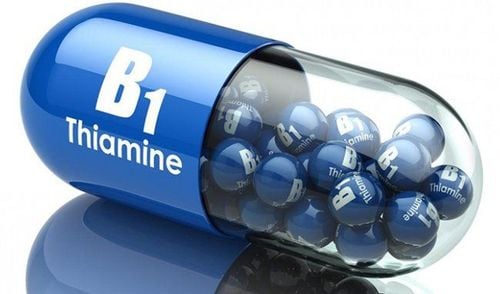
bổ sung thiamin liều cao có thể làm giảm lượng đường trong máu và huyết áp đối với bệnh nhân có lượng đường trong máu cao
3. Riboflavin (Vitamin B2)
Riboflavin is the only water-soluble vitamin used as a food color. It is named for its color - from the Latin flavus meaning "yellow". Types of Riboflavin
Two of the most common flavoproteins are flavin adenine dinucleotide and flavin mononucleotide. They are found in many foods.
3.1 Role of Vitamin B2 Riboflavin acts as a coenzyme involved in the conversion of nutrients into energy. Riboflavin is needed for the release of energy from proteins, carbohydrates and fats. Involved in the conversion of tryptophan to niacin (vitamin B3) and iron metabolism in the body, essential for the normal structure and function of the mucous membranes and skin. In addition, it is also necessary for the conversion of vitamin B6 to another active form.
3.2 Food sources Milk, eggs, fortified breakfast cereals, liver, legumes, mushrooms and green vegetables are all good sources of riboflavin.
3.3 Recommended amount
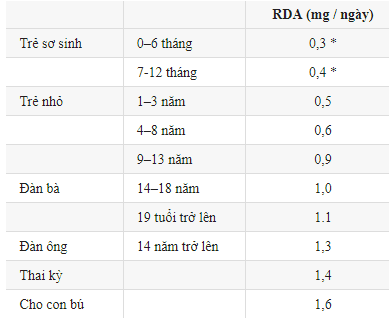
The values above represent daily amounts sufficient to meet most people's requirements.
3.4 Deficiency Riboflavin deficiency is rare in developed countries. However, a poor diet, old age, lung disease and alcoholism can increase the risk.
A severe deficiency leads to a condition known as ariboflavinosis, which is characterized by sore throat, glossitis, anemia, as well as skin and eye problems. It also impairs the metabolism of vitamin B6 and converts tryptophan to niacin.
3.5 Side Effects and Toxicity No toxic or adverse reactions to riboflavin in humans have been reported. The body excretes excess riboflavin in the urine.
3.6 Benefits of Vitamin B2 Supplements Low-dose vitamin B2 supplements may have the potential to lower blood pressure and reduce heart disease risk in people with two copies of the MTHFR 677 TT gene.
Higher doses of vitamin B2, such as 200mg twice a day, may also reduce migraines.
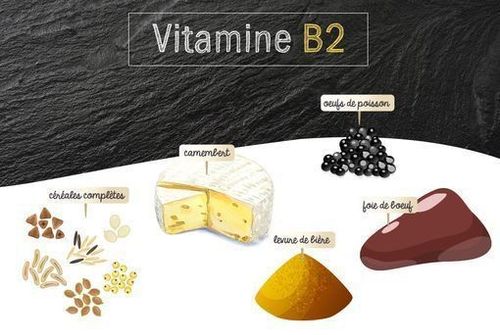
Vitamin B2
4. Niacin (Vitamin B3)
Niacin, also known as vitamin B3, is the only B vitamin your body can produce from another nutrient - the amino acid tryptophan.
4.1 Types of Vitamin B3 Nicotinic Acid: The most common form in supplements. Also found in both plant and animal foods. High doses of nicotinic acid supplements can cause a condition called niacin-induced flushing. Nicotinamide (niacinamide): Found in supplements and foods. The compound nicotinamide riboside also has vitamin B3 activity. It is found in small amounts in whey protein and baker's yeast.
4.2 Role and function All dietary forms of niacin are eventually converted to nicotinamide adenine dinucleotide (NAD+) or nicotinamide adenine dinucleotide phosphate (NADP+), which acts as a coenzyme in the body, playing a vital role. It plays an essential role in cellular function and acts as an antioxidant.
Vitamin B3 is needed for the release of energy from food (a precursor to the coefficients NAD and NADP play a fundamental role in reactions important in carbohydrate metabolism). In addition, Vitamin B3 can be synthesized from the essential amino acid tryptophan to meet daily requirements.
4.3 Nutritional Sources Meat, wheat and cornmeal, eggs, dairy products and brewer's yeast are all good sources of dietary Niacin.
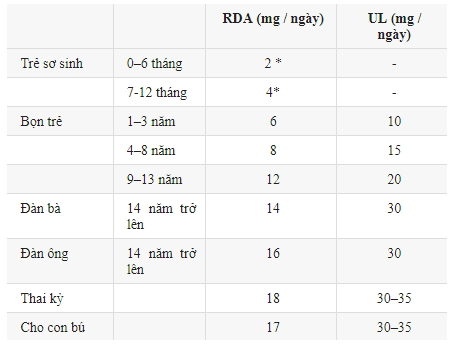
The table above shows the RDA or adequate amount of niacin. These values are the estimated amount of niacin that most people (97.5%) should get from their daily diet. UL - is the highest daily intake considered safe for most people.
4.5 Deficiency Vitamin B3 deficiency known as pellagra involves inflamed skin with effects that produce photosensitive skin similar to severe sunburn, mouth sores, diarrhea, insomnia, and dementia. Like all micronutrient deficiencies, they can be fatal if left untreated.
You can get all the vitamin B3 you need from a varied, high-protein diet because your body can synthesize vitamin B3 from the amino acid tryptophan.
4.6 Side effects and toxicity Natural vitamin B3 from food doesn't seem to have any side effects.
However, high doses of vitamin B3 supplements can cause flushing, nausea, vomiting, stomach irritation and liver damage.
Nicotinic acid can also increase the level of uric acid in the blood, worsening symptoms in people prone to gout. Long-term use of high doses of Vitamin B3 (3–9 grams per day) can lead to hepatitis, and may increase insulin resistance and blood sugar levels
4.7 Benefits of Supplements Medicines and foods Nicotinic acid supplements in doses of 1,300–2,000 mg per day are commonly used to normalize blood lipid levels. They reduce high levels of “bad” low-density lipoprotein (LDL) cholesterol, while increasing levels of high-density lipoprotein (HDL) “good” cholesterol when they are low. Triglyceride levels may also decrease in people taking the supplement.
Some studies also show that nicotinic acid reduces the risk of heart disease, but its benefits are controversial and research results are inconsistent
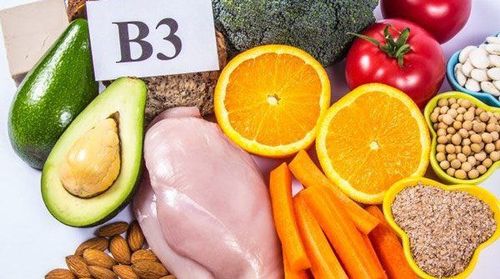
Một số thực phẩm có chứa vitamin B3
5. Vitamin B6
Like other B vitamins, vitamin B6 is a group of related compounds, such as:
Pyridoxine : This form is found in fruits, vegetables and whole grains, as well as supplements. Processed foods may also contain added pyridoxine. Pyridoxamine: Used until recently in dietary supplements in the US. However, the FDA currently considers pyridoxamine to be a pharmaceutical drug. Pyridoxamine phosphate is a form of vitamin B6 commonly found in foods of animal origin. Pyridoxal: Pyridoxal phosphate is the main vitamin B6 found in foods of animal origin. In the liver, all dietary forms of vitamin B6 are converted to pyridoxal 5-phosphate, the active form of the vitamin.
5.2 Roles and functions Like other B vitamins, vitamin B6 acts as a coenzyme in many chemical reactions. Vitamin B6 is involved in the breakdown of glycogen and has a role in regulating the action of steroid hormones. Vitamin B6 is also needed for the formation of red and white blood cells, transporting iron and helping the body synthesize certain neurotransmitters. Along with folate and vitamin B12, vitamin B6 is needed to maintain normal blood homocysteine levels. Elevated homocysteine is a risk factor for cardiovascular disease.
5.3 Nutrient Sources Vitamin B6 is found in many foods including tuna, pork, turkey, bananas, chickpeas and potatoes. Vitamin B6 is also added to breakfast cereals and soy-based meat substitutes.
Foods of animal origin have more vitamin b6 than foods of plant origin.
5.4 Recommended Amount
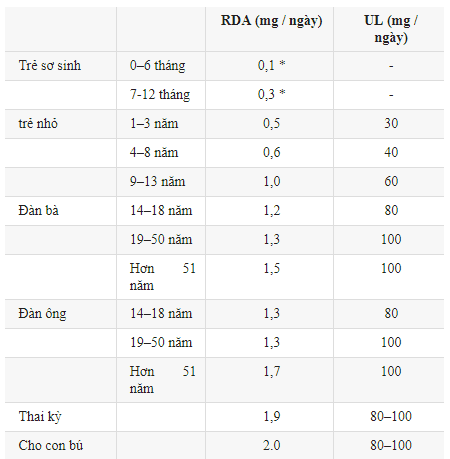
RDA is the estimated daily intake to be sufficient for most people. UL - is the highest daily intake considered safe for most people.
5.5 Deficiency A deficiency of vitamin B6 is rare because it is widely distributed in food and synthesized by the body's gut microbiota. Deficiency may occur only as a complication of disease or prolonged use of certain medications. Some studies show that a vitamin B6 deficiency is associated with an increased risk of cancer.
Main symptoms include anemia, skin rash, seizures, confusion, and depression.
5.6 Side Effects and Toxicity Long-term intake of high doses of vitamin B6 from supplements (usually >200mg/day) has been reported to cause sensory nerve damage and skin damage.
Eating a lot of pyridoxine supplements can also suppress milk production in nursing women
5.7 Benefits of supplementation Large doses of pyridoxine have been used to treat carpal tunnel syndrome and pre-syndromic syndrome. period .
However, its benefits are controversial. There have not been any studies that have proven that pyridoxine supplements are an effective treatment for these conditions
Because of the health side effects of high-dose pyridoxine supplements, they should only be taken. performed under medical supervision.
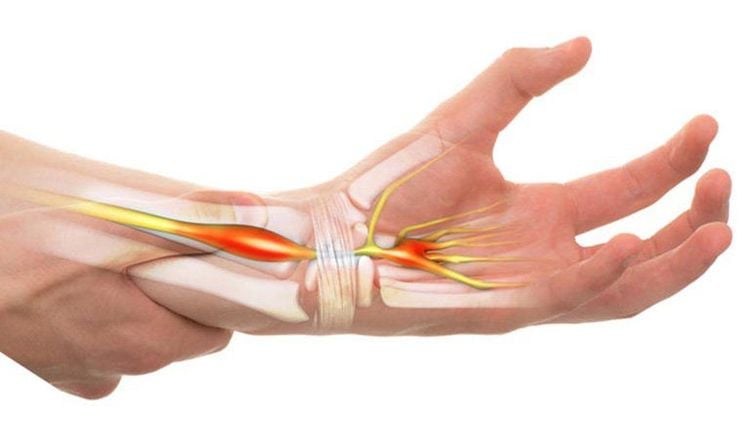
Hội chứng ống cổ tay
6. vitamin B12 (Cobalamin)
Vitamin B12 is the only vitamin that contains a metallic element, namely cobalt. For this reason, it is often referred to as cobalamin.
6.1 Types of vitamin B12 There are four main types of vitamin B12 - cyanocobalamin, hydroxocobalamin, adenosylcobalamin and methylcobalamin.
All of them can be found in supplements, although cyanocobalamin is the most common due to its stability, cyanocobalamin is only found in trace amounts in foods.
Hydroxocobalamin is the most common natural form of vitamin B12 and is widely found in foods of animal origin.
Other natural forms methylcobalamin and adenosylcobalamin have gained popularity as supplements in recent years.
6.2 Role and function Vitamin B12 acts as a coenzyme involved in the normal function of the nervous system, the formation of red blood cells and folate metabolism. It is also involved in the conversion of proteins and fats into energy and is required for cell division and DNA synthesis. Along with folate and vitamin B6, vitamin B12 is needed to maintain normal blood homocysteine levels. Elevated homocysteine is a risk factor for cardiovascular disease.
Eating well helps maintain brain function and development, nerve function and red blood cell production.
6.3 Nutrient Sources Vitamin B12 is found in most foods of animal origin. Green plants provide no source but it can be synthesized by some algae and bacteria, although the bioavailability of such forms has been disputed. Meat, fish, milk, cheese, eggs, yeast extracts and fortified breakfast cereals are all food sources.
6.4 Recommended Amount
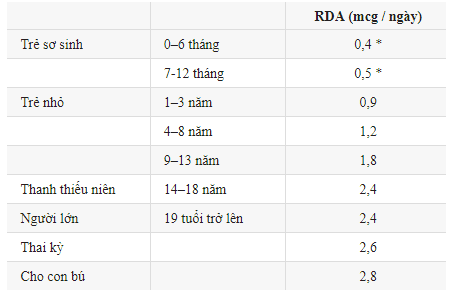
RDA is the estimated daily intake to be sufficient for most people.
6.5 Vitamin B12 deficiency is stored in the liver, so even if you don't get enough, it can take a long time for deficiency symptoms to develop.
Those most at risk of deficiency are vegetarians (never or rarely eat foods of animal origin). Vitamin B12 deficiency is more common in the elderly due to malabsorption, usually due to chronic inflammation of the stomach lining (atrophic gastritis) or lack of intrinsic factor (essential for vitamin B12 absorption). .
Deficiency leads to the development of pernicious anemia, in which red blood cells are enlarged (megaloblastic), and peripheral nerve damage develops, loss of appetite, tongue pain, neurological problems epilepsy and dementia.
6.6 Effects and toxicity Only a small percentage of vitamin B12 can be absorbed from the gastrointestinal tract. The amount absorbed depends on the intrinsic factor production in the stomach. Currently, there are no adverse effects associated with high intake of vitamin B12 in healthy individuals.
6.7 Benefits of Supplements One small study found that taking 1,000 mcg per day could improve verbal learning in people recovering from a stroke, but this is yet to be officially announced.
Alternatively, hydroxocobalamin injection is used to treat cyanide poisoning, often in combination with sodium thiosulfate.
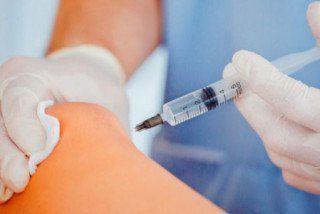
Trường hợp cần tiêm hydroxocobalamin để điều trị ngộ độc xyanua
7. Vitamin C
Vitamin C is the only water-soluble vitamin that does not belong to the vitamin B group. It is one of the body's main antioxidants and is necessary for collagen synthesis.
7.1 Types of vitamin C Vitamin C comes in two forms, the most common being known as ascorbic acid.
An oxidized form of ascorbic acid called dehydroascorbic acid also has vitamin C activity.
7.2 Roles and functions Vitamin C supports many essential bodily functions, including:
Antioxidant defense : Muscle Your body uses antioxidants to protect itself against oxidative stress. Vitamin C is one of its most important antioxidants. Formation of collagen: Without vitamin C, the body cannot synthesize collagen, the main protein in connective tissue. As a result, deficiency affects your skin, tendons, ligaments, and bones. Immune function: Immune cells contain high levels of vitamin C. During an infection, its content is rapidly depleted. Unlike the B vitamins, vitamin C does not act as a coenzyme, although it is a cofactor for prolyl hydroxylase, an enzyme that plays an essential role in collagen formation.
7.3 Nutrients Fresh fruits, especially citrus fruits and berries; Green vegetables, peppers and tomatoes are all good sources of vitamin C. It is also found in potatoes (especially new potatoes).
Cooked foods of animal origin contain almost no vitamin C, but low amounts can be found in raw liver, eggs, fish roe, meat and fish.
Cooking or drying food significantly reduces the vitamin C content of the food.
7.4 Recommended Amount
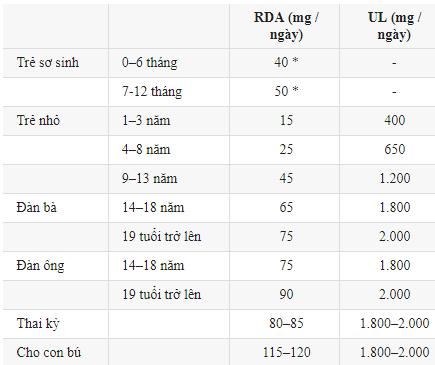
RDA is the estimated daily intake to be sufficient for most people. UL - is the highest daily intake considered safe for most people.
7.5 Vitamin C Deficiency Severe vitamin C deficiency leads to rickets. Signs of deficiency do not manifest until people who have been adequately supplemented have been deficient in vitamin C for four to six months. Deficiency has been linked to fatigue, weakness, and aching joints and muscles. Most other symptoms of scurvy are caused by impaired collagen synthesis and are characterized by bleeding gums, poor wound healing, and damage to bone and other tissues.
Like all vitamin deficiencies, rickets can be fatal if left untreated.
7.6 Side effects and toxicity Most people tolerate high doses of vitamin C without any side effects.
However, very high doses in excess of 3 grams per day cause diarrhea, nausea and abdominal cramps. This is because only a small amount of vitamin C can be absorbed from a single dose.
Taking high doses of drugs or supplements above 1,000 mg per day may also increase the risk of kidney stones in susceptible individuals.
7.7 Benefits of Supplements There is ample evidence that vitamin C supplements are beneficial for people who are getting adequate amounts from the diet.
An analysis of 29 studies concluded that supplements that provide at least 200 mg of vitamin C per day can help you recover from the common cold. Vitamin C can also help lower blood pressure, improving the absorption of iron from meals. In addition, studies show that vitamin C may reduce the risk of cognitive decline, improve blood vessel function, and lower blood sugar, but high-quality studies are needed before conclusions can be made. sure.
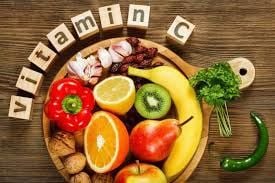
Bổ sung vitamin C hàng ngày từ chế độ ăn uống rất tốt
8.2 Sources of nutrients
The term folate describes a group of derivatives of pteroyl glutamic acid. Folic acid is the synthetic form of folate. It is used in supplements and to fortify foods.
8.1 Roles and Functions Folate functions together with vitamin B12 to form healthy red blood cells. It is also necessary for normal cell division, the normal structure of the nervous system, and is especially important in the development of the neural tube (which develops into the spinal cord and skull) in the embryo.
There is convincing evidence that oral folic acid supplementation of 400μg/day before conception and during the first 12 weeks of pregnancy prevents the majority of neural tube defects (eg spina bifida) in infants. All women of childbearing age who are planning a pregnancy are advised to take a daily supplement as it is difficult to achieve 400μg/day from diet alone.
8.2 Nutrients Green leafy vegetables, brown rice, peas, oranges, bananas and fortified breakfast cereals are good sources of folate.
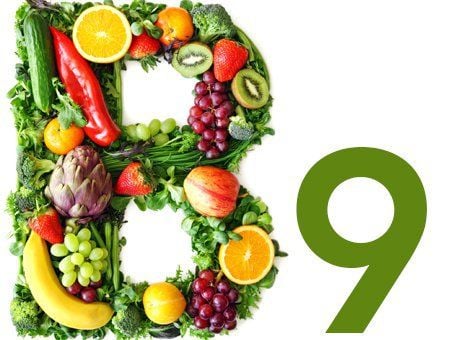
Folate tự nhiên xuất hiện trong rau lá xanh đậm, gan bò, trái bơ, đu đủ, nước cam, trứng, đậu, quả hạch
8.3 Deficiency A deficiency leads to megaloblastic anemia and can be caused by poor diet or increased requirements, for example during pregnancy, by prolonged use of the drug or by malabsorption.
Giant cell anemia is characterized by the release of immature erythrocyte precursors into the circulatory system due to an impairment of normal maturation in the bone marrow. There may also be a low white cell count and platelet count in the blood. Deficiency is often accompanied by insomnia, depression, forgetfulness, and irritability.
8.4 Side Effects and Toxicity Several side effects have been reported although a high intake may mask a vitamin B12 deficiency and excessive intake may cause complications if taken with a vitamin B12 supplement. certain medications, such as anticonvulsants, are used to treat epilepsy.
8.5 Benefits of Supplementation Along with vitamins B6 and B12, folate is involved in maintaining normal blood homocysteine levels. The amino acid homocysteine is an intermediate in folate metabolism and evidence suggests that elevated blood homocysteine (hyperhomocysteinemia) is an independent risk factor for cardiovascular disease.
High folate intake has been shown to reduce blood homocysteine levels in individuals at genetic risk of hyperhomocysteinemia and as a result it has been suggested that folic acid supplementation can reduce the risk of cardiovascular disease.
However, a recent meta-analysis of several large trials failed to demonstrate an effect of folic acid on coronary heart disease or stroke risk.
For children to be healthy and develop well, it is necessary to have a nutritious diet in terms of quantity and quality balance. If children are not provided with adequate and balanced nutrients, it will lead to diseases of excess or lack of nutrients, which adversely affect the comprehensive development of children in terms of physical, mental and motor skills.
Children who do not eat properly are at risk of micro-mineral deficiency causing anorexia, growth retardation, malabsorption,... If they notice the above signs, parents should supplement their children with products. The supplement contains lysine, essential micro-minerals and vitamins such as zinc, chromium, selenium, and B vitamins to help fully meet the nutritional needs of children. At the same time, these essential vitamins also support digestion, enhance nutrient absorption, help improve anorexia, and help children eat well.
Parents can learn more:
Signs of zinc deficiency in children
Micronutrient deficiency and failure to gain weight in children
Please regularly visit Vinmec.com website and update useful information to take care of your child. Take care of the baby and the whole family.
Article reference source: nutrition.org.uk, healthline.com




